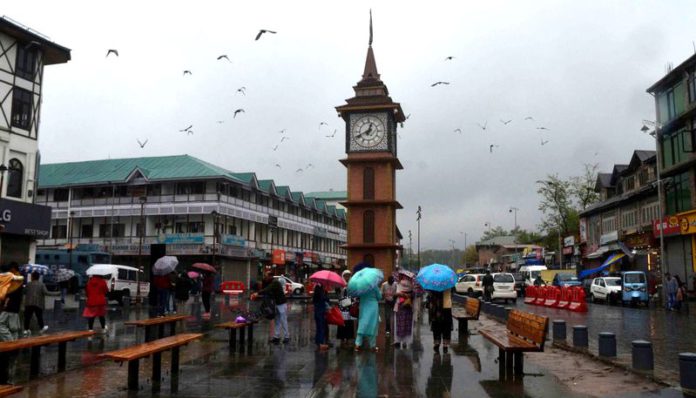Jammu and Kashmir continued to witness an upward trend in temperatures on Tuesday while the Meteorological Department (MeT) predicted more precipitation over the next 24 hours.
Over the past few days, temperatures have been climbing steadily.
On Sunday, Srinagar recorded a temperature of 27.7 degrees Celsius, which rose to 31.7 degrees on Monday.
Similar trends were observed in other parts of the region.
Qazigund saw temperatures rise from 27.7 degrees Celsius to 31.9 degrees Celsius, Pahalgam from 25 degrees Celsius to 29.6 degrees Celsius, and Kupwara from 26.3 degrees Celsius to 28.7 degrees Celsius.
Kokernag also recorded a significant increase from 27.8 degrees Celsius to 31.9 degrees Celsius.
In the higher altitudes, Gulmarg reported a rise from 17.5 degrees Celsius to 21 degrees Celsius.
Jammu, which already experiences higher temperatures, saw an increase from 33.3 degrees Celsius to 36.4 degrees Celsius.
Reports of showers were received from various places including Kupwara, Gulmarg, Tangdhar, and Uri, offering temporary relief from the heat.
However, the overall trend indicates a rise in temperatures.
According to the MeT advisory, J&K would experience generally cloudy skies with intermittent spells
of light to moderate rain and thundershowers at many places in the Kashmir division and widespread areas in the Jammu division from July 30 to 31.
It said that the weather was expected to remain generally cloudy with spells of intermittent light to moderate rain and thundershowers at many places in Kashmir division and most places in Jammu division from August 1 to 7.
The advisory issued by the department warns of potential intense showers over brief periods, which could lead to flash floods, cloudbursts, landslides, mudslides, and shooting stones in vulnerable areas of J&K.
There is also a possibility of heavy rainfall at a few places in Jammu division.
The rising temperatures have significant implications for J&K agriculture, water supply, and overall living conditions.
The heatwave can stress crops and livestock, while the anticipated rainfall, though providing some relief, could disrupt daily life and infrastructure.




